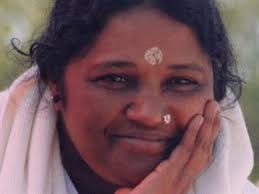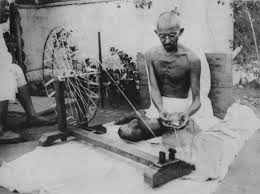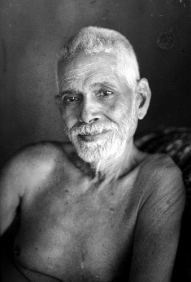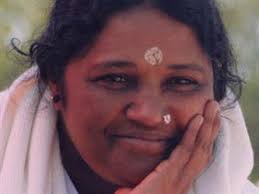Gandhi’s Better Angels: A Vision for a Non-Violent Future
Maxwell Cooper, University of Ottawa (Canada) (International Gandhian Conference, Delhi University, Delhi, India; January 2013) [https://uottawa.academia.edu/MaxCooper]
Amongst the scores of letters he attended to every day, Mahatma Gandhi responded to one V.N.S. Chary, on April 9, 1926. Chary’s original letter does not survive, but we may reconstruct from the Mahatma’s response that he raised a particular existential question that has long troubled many practitioners of nonviolence: Is overcoming violence really possible? Is violence not simply an ineluctable feature of embodied existence and human nature? Questions in this spirit have a long history, having been explored by thinkers such as Heraclitus, Freud, Nietzsche, and others, who have often emphasized the essential duality of worldly existence – of the mutual necessity of opposites – for good to exist, so must evil; to know peace, perhaps we must know violence.
In his letter, Mr. Chary appears to have cited examples from the animal world: Hawks eat snakes; snakes eat lizards; lizards eat cockroaches, who themselves eat ants. This violence is simply natural; and it occurs perhaps for a greater good. If beings did not eat other beings, life on earth would not be possible. Beyond Chary’s points, we might also reflect that even our own human bodies are unavoidably violent; besides periodically crushing or inhaling insects unawares, our own white blood cells are constantly exterminating malignant bacteria; if they failed to kill these bacteria, we would die. Is violence not necessary for life, and should we not see it as unreasonable, or indeed impossible, to hope for a renunciation of violence?
In his response, Gandhi felt otherwise. He wrote, “I too have seen many a lizard going for cockroaches and have watched cockroaches going for lesser forms . . . from watching these very operations, I learn that the law of the beast is not the law of the Man; that Man has by painful striving to surmount and survive the animal in him, and from the tragedy of the himsa (violence) which is being acted around him he has to learn the supreme lesson of ahimsa (non-violence) for himself.” Gandhi thus believes that a renunciation of violence is possible, and indeed is necessary for us if we are to become fully human.
While many of us find this message inspirational, we also tend to see it as unrealistic. It would seem that our world today is equally, or more, violent than it has ever been. News media constantly report to us new and upsetting acts of greed and hatred, and the latest murders and rapes. Most of us agree that humanity seems to be moving in the wrong direction. A recent article in the Times of India asked, “In moments of seeming social collapse, what gives you hope?” Most respondents tend to be extremely pessimistic.
The very pervasiveness of this attitude makes all the more shocking the findings of the American researcher Steven Pinker, who in his 2011 book The Better Angels of Our Nature (an encyclopedic tome supported by 800 exhaustive pages of research and analysis) came to a surprising conclusion: that rates of violence between humans are actually not on the increase, but in fact have steadily declined throughout our history; we may in fact be currently living in the single “most peaceable era in our species’ existence.” Pinker provides a wealth of evidence; I will cite just a few statistics here: In pre-historic times, fossil evidence indicates that about 1 in every 9 deaths came at the hands of another human being; in every society today the number is a small fraction of that. “The murder rate in medieval Europe was more than thirty times what it is today. Slavery, sadistic punishments, and frivolous executions,” while comparatively rare today, “were unexceptionable features of life for millenia.” “Wars between developed countries have vanished, and even in the developing world, wars kill a fraction of the numbers they did a few decades ago. [Rates of] Rape, battering, hate crimes, deadly riots, child abuse, cruelty to animals” are all substantially down.
So maybe we are in fact beginning to fulfill Gandhi’s aspiration that we can, in this embodied world of constant and unavoidable violence, gradually as a race begin to transcend this pattern, and realize the ideal of ahimsa for ourselves. Pinker has provided substantial concrete evidence that, to our own surprise, over the past thousands of years, this has actually gradually been happening.
Intriguingly, Pinker’s primary attributions of what have allowed humankind to do this also fit with Gandhi’s description that this must be done “by painful striving.” Pinker identifies four principal “better angels of our nature” as the leading factors in the decline of violence: Self-Control, Morality and Taboo, Reason, and Empathy. It is only through hard work and painful striving, over the centuries, that we have gradually become less violent. While Pinker makes surprisingly almost no mention of Gandhi in this compendious work on violence, one may note that all four of Pinker’s “better angels” represent some of Gandhi’s most essential concerns.
Pinker’s first better angel is self-control: Pinker notes that “violence . . . is largely a problem of self-control” and that “Self-control has been credited with one of the greatest reductions of violence in history, the thirtyfold drop in homicide between medieval and modern Europe” (592). Anyone familiar with Gandhi’s life knows that self-control was for him a central principle. Well-known is his strict vow of brahmacharya (celibacy), which he maintained without compromise for over 40 years until his death. Brahmacharya meant for Gandhi far more than simply sexual chastity. He increasingly promoted as years progressed what he called brahmacharya’s “wider definition,” as “control [of] all the eleven organs.” He wrote, “I have defined brahmacharya in a wide sense and described even idle thoughts as violation of it.”; “The brute by nature knows no self-restraint. Man is man because he is capable of, and only in so far as he exercises, self-restraint.” Gandhi thus sees self-restraint as what differentiates humans from brutes; as we saw in our opening quotation, it is an emphasis of precisely this distinction upon which he founds his belief that humans can transcend violence. Pinker’s finding that self-control has been one of the principal factors in violence’s decline appears to validate Gandhi’s intuition.
Pinker’s second pacifying better angel is what he calls “Morality and Taboo”: this refers to the shifting senses of societies regarding conventions of morality, and practices which are considered taboo. For instance, in the American South during the early 1800’s it was not considered taboo or immoral to have one’s slave flogged for an act of theft; indeed, it would have been taboo for a slave owner to have foregone punishment. Pinker emphasizes in particular that movements towards recognizing the rights of oppressed segments of the population have been a major factor in the historical decline in violence.
These types of reform were also primary Gandhian tenets. We may note his vociferous campaigns against untouchability. “What I want and what I should delight in dying for, is the eradication of untouchability root and branch,” he declared. “Harijan service,” he said, is “the breath of life for me, more precious than the daily bread.” His repeated fasts for this cause prove this statement not to be hyperbole.
Another widely oppressed group that Gandhi stood up for were women. Recently here in Delhi many have mobilized to protest violence against women. Interestingly, Pinker himself was interviewed for a Times of India piece on this issue just two weeks ago. In the interview, he noted that changing attitudes towards women in the West – women beginning to be treated as equals with men, and jokes about rape and sexual violence, for instance, becoming unacceptable – had led to the precipitous decline of rates of rape. These were shifts in conventional morality and what was considered taboo. Pinker suggested India could take heart from the success of the U.S. women’s rights movement. The interview’s headline proclaimed that the U.S. movement for women’s rights should be an inspiration for India. However, India need not look only to the West for inspiration in this area. Gandhi himself was far ahead of his time in advocacating womens’ rights. As members of his ashrams, women were equals with men; here, as Judith Brown writes, they were “not subjected to patriarchal authority as they would have been in family homes in most of India.” Gandhi devoted an entire section of his Constructive Programme to women, wherein he wrote that “Woman has been suppressed under custom and law for which man was responsible and in the shaping of which she had no hand. . . . woman has as much right to shape her own destiny as man has to shape his”; “Women have been taught to regard themselves as slaves of men. It is up to Congressmen to see that they enable them to realize their full status and play their part as equals of men.” If Pinker and others are correct, Gandhi’s suggestions for changing societal norms regarding women are precisely what are necessary to reduce gender violence.
Pinker’s third better angel is reason. Reason allows us to look at things impartially. Where an unreasoned view might hold to old prejudices – that one race or gender is less worthy than another – a rational approach shows there is no truth to such a judgment. The rise of reason in societies has tended to correlate with substantial reductions in violence. Some may think that perhaps this better angel does not well fit Gandhi. To be sure, Gandhi was known for often acting based on his ethereal inner voice, rather than discursive rational thought. However, Reason was still quite important for Gandhi. He famously maintained that “Faith . . . must be enforced by reason . . . When faith becomes blind, it dies . . . The more intense one’s faith the more it whets one’s reason.” That his faith whetted his reason we can see in his writings. Gandhi’s style is always carefully reasoned, and there is a thread of calm rationality running through all of his work. In any case, though he often lived from the heart, certainly Gandhi applied reason more than any of us in the Socratic spirit of constant self-enquiry, following the dictum that ‘the unexamined life is not worth living’; self-examination was as routine for Gandhi as prayer. Gandhi’s constant soul-searching epitomises the application of impartial inquiry into one’s own motivations, which is precisely the aspect of Reason that Pinker emphasizes.
Pinker’s final better angel is empathy. The first sense of empathy Pinker highlights connotes the exercise of “perspective-taking” – “walking a mile in another’s moccasins.” Pinker surveys an array of studies to conclude that “exercises in perspective-taking do help to expand people’s circle of sympathy,” and that “the cognitive process of perspective-taking and the emotion of sympathy must figure in the explanation for many historical reductions in violence.” Seeking to experience life from others’ perspectives (admittedly a difficult task) was very important for Gandhi. One goal of his spinning work, pursued often for many hours each day, was to experientially align himself with India’s peasants. He was not only a spinner, but also a cleaner, sweeper, and scavenger. Wherever Gandhi stayed, a frequently heard complaint of the sweepers and latrine cleaners was “the guest has taken away my work.”
Pinker notes that empathy, instrumental as it is for counteracting violence, is somewhat fickle: we usually tend to feel empathy only towards certain people. “The problem with building a better world through empathy,” he writes, “[is that] depending on how beholders conceive of a relationship, their response to another person’s pain may be empathic, neutral, or even counterempathic.” If I see someone as my enemy, I am more likely to feel counterempathy, which means that rather than wishing to spare them pain, I may actually take pleasure in causing them pain. Pinker notes that our society’s overall inclination towards this has thankfully declined to some extent. Only a few hundred years ago, public executions were a popular form of entertainment, where crowds used to cheer enthusiastically as criminals were hanged. Today we are less likely to cheer on than to be offended by this kind of macabre display.
However, the desire to inflict pain on one’s enemy still persists to a great extent. We may recall the celebrations in the U.S. after news of the death of Osama Bin Laden. Often crime victims’ families express a desire to take vengeance on those who have harmed their loved ones. Gandhi’s example can perhaps show us here the next step in realizing a less angry and hateful world. Gandhi never wished ill of his enemies for a simple reason – he saw no-one as an enemy.
His entire active life, he converted would-be enemies into allies or friends. This began in South Africa in 1914, when he managed to win the sympathy of the hard-nosed General Smuts, until then an avowed enemy of the local Indian population. Years later, Smuts called Gandhi “an inspiration to us not to weary in well doing. . . . It was my fate to be the antagonist of a man for whom even then I had the highest respect. . . . He never forgot the human background of the situation, never lost his temper or succumbed to hate.” As Gandhi himself wrote: “It is a mean desire to wish to kill an enemy . . . dharma consists in winning him over to our way of thinking and converting him to a friend.” In Hind Swaraj, he argued that the English were themselves victims of their own passions and their mechanised society: “If you will sufficiently think over this, you will entertain the same opinion and cease to blame the English. They rather deserve our sympathy.”
Pinker further outlines that the relationships in which people tend to feel most empathetic are family relations. This too Gandhi seems to have anticipated. He wrote of harijans, for instance, in familial terms: “the removal of untouchability means treating the so-called untouchables as one’s own kith and kin.” Beyond this, Gandhi often enjoined his correspondents to “regard the whole world as one family.” When a reporter once asked Kasturbai how many children she had, she responded, “I have four. But Bapu, my husband, has four hundred million.” Gandhi sought to see the nation and world as his family; and if the studies Pinker cites are correct, this is the most reliable way to induce empathic feelings, and in turn further reduce violence in the world.
Pinker, however, does not believe this kind of what he calls “expanding the circle of empathy” to be feasible: “To hope that the human empathy gradient,” he writes, “can be flattened so much that strangers would mean as much to us as family and friends, is utopian in the worst . . . sense, requiring an unattainable and dubiously desirable quashing of human nature.”
We have noted that Pinker unfortunately pays little attention to Gandhi in his book. But we might ourselves look at Gandhi’s example to see if his life belies Pinker’s assertion. Did Gandhi’s attempts to vastly expand his circle of empathy result in an undesirable quashing of human nature? One argument that it did may call on the examples of his sons. Gandhi had a notoriously difficult relationship with his eldest son, Harilal, for instance; Harilal could never live up to his father’s great expectations for him, and by most accounts lived quite a bitter and tragic life. Harilal’s younger brothers also often had difficulty meeting their father’s demands. This appears to be a failing on Gandhi’s part, but also one that he readily acknowledged. He presented this as evidence for one thing he insisted on throughout his life – that he was merely human, not a divine avatar or perfect being, and that his life’s projects were experiments, not guaranteed to turn out perfectly.
However, while he failed in his experiments with Harilal, his relationships with most others also living closest to him on a daily basis were by almost all accounts extremely affectionate. Easwaran gives the following description of Gandhi’s relationships with his fellow ashramites:
“There is no more beautiful aspect of Gandhi’s character than his loving relationship with each one of the people who were part of his ashram family. He was concerned with every detail of their lives, and while he demanded a great deal from those close to him, his treatment of them was filled with love, humor, and tact. His relationship with each person was individual. He was conscious of the needs of others even to the smallest detail, and often overwhelmed people near him by observing and attending to some minute need of theirs in the midst of his own busy schedule.”
This description shows Gandhi to be a loving and affectionate companion to all of those around him on a personal and individual basis. He had not at all the manner of the distant and disinterested mystic, but that of the sensitive and caring guardian. Fully cognizant of worldly matters and everyday humanity, he appears to contradict Pinker’s certainty that the attempt to broaden the circle of empathy so widely must result in an undesirable “quashing of human nature.”
To tell the whole truth, we must acknowledge that Gandhi sought sympathy even more broadly than with all of mankind. Gandhi’s oft-stated goal was to transcend his individual ego and to “identify himself with all that lives”; “we cannot [fulfill “the purpose of life”] unless we learn to identify ourselves with all that lives”; “I want to realize brotherhood or identity not merely with the beings called human, but I want to realize identity with all life.” Gandhi is here following an important thread in the Indian spiritual tradition. The Isha Upanishad speaks of the fearlessness of “Those who see all creatures in themselves / And themselves in all creatures”; and in Gandhi’s beloved Bhagavad Gita, Krishna recommends that the yogi “see the Self in every creature and all creation in the Self” (6.29); and elaborates that “When a person responds to the joys and sorrows of others as if they were his own, he has attained the highest state of [yoga]” (6.32). Gandhi hoped to transcend his egoistic desires and attachments – to “make himself zero,” as he put it. Through the renunciation of selfish individuality, and an identification with all living creatures, he hoped to realize universal love and compassion.
Though Pinker’s work gives so much cause for optimism about our race’s progress towards the renunciation of violence, Pinker unfortunately misses a chance to show how this work could be taken further. Maybe the impact of religious or spiritual aspirations is what Pinker needs to take into account: our not merely becoming less violent due to more oblique, socio-political factors, but through spiritual striving that many great souls have urged us towards throughout history. Pinker unfortunately gives quite short shrift to religions generally. As reviewer Ross Douthat notes, “despite the book’s title . . . the treatment of religion in ‘The Better Angels of Our Nature is astonishingly glib.” Pinker unfortunately neglects the hope that Gandhi’s practise of radical empathy and broader identification can help map a blueprint for the future. That this might be an effective strategy is suggested both by its correspondence with Pinker’s findings about what factors have actually led humanity to become less violent historically, and also by Gandhi’s own example of being able to feel boundless love and compassion for all beings, while maintaining exemplary relations with the beings closest to him.
Perhaps the next step in mankind’s evolution can be to further transcend violence, not simply by restraining ourselves or observing more progressive societal norms, but by seeking to cultivate Gandhian feelings of universal, undiscriminating, love and goodwill. This might be very difficult. But perhaps we do not need to do it all at once. Just as the reduction in human violence to today’s comparatively peaceful era has been a long, hard, and gradual process, so too the gradual change in consciousness to a more undiscriminating love will probably take a long time. We can take hope, however, that even small progress counts. As the Gita says, even “a fragment” of this work can be very efficacious, and “No effort in this world / is lost or wasted” (2.40).








